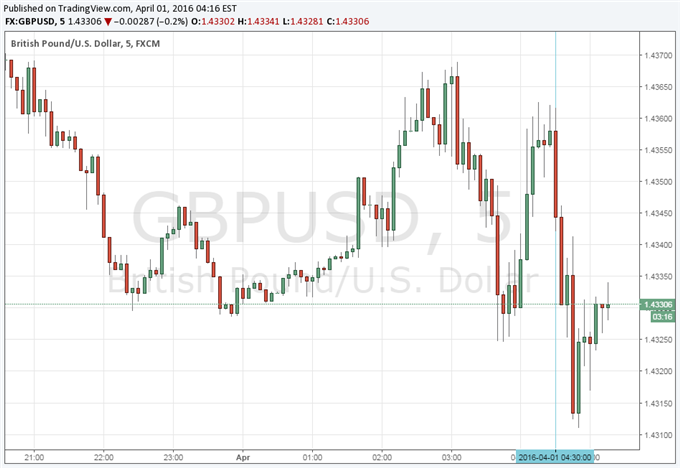The British Pound traded lower versus other major currencies (at the time this report was written) after today’s Markit/CIPS Manufacturing PMI showed manufacturing growth rose slightly. The manufacturing diffusion index, by Markit Economics, rose to 51.0 from the prior reading of 50.8. The number was below economists’ expectations of 51.2, and marked the third consecutive month for manufacturing job losses. A number above 50 points to an expansion, below 50 to a contraction.
Looking into the report, Markit remarked that price pressures remained on the downside during March. Markit said that industry is still close to the stagnation and will struggle to make a meaningful contribution to GDP. Furthermore, Markit mentioned the Sterling as a source of concern; they said that the drop in the British Pound may help exports, but may also cause issues in the cost side through higher cost of imports for manufactures which could apply pressures on their margins. Though the overall index showed a rise, Markit commented, the marginal increase will fuel concerns over major economic challenges such as the results of the “Brexit” vote.
In their latest rate decision, the BoE said inflation remains below target due to drags from energy and food prices, with core inflation subdued as well as a consequence of the past appreciation of sterling, weak global inflation and restrained domestic cost growth. It seems the soft prints in the PMI figures did little to offset mounting concerns in the UK, and the British Pound traded lower versus other major currencies.
Daily FX Sr. Technical Strategist Jamie Saettele Identified 1.4515 as a key resistance level for GBP/USD.
GBP/USD 5 Minute Chart: April 1, 2016










Leave A Comment